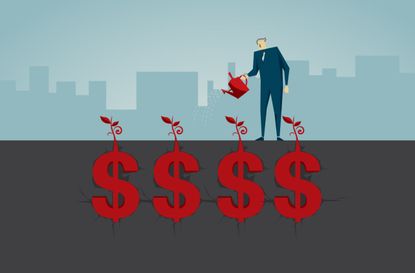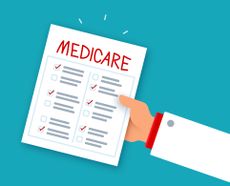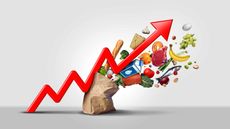Kiplinger's GDP Outlook: The Economy is Slowing Again
There’s a 50% chance of a recession in the second half of 2023.
- (opens in new tab)
- (opens in new tab)
- (opens in new tab)
- Newsletter sign up Newsletter


Kiplinger's Economic Outlooks are written by the staff of our weekly Kiplinger Letter and are unavailable elsewhere. Click here for a free issue of The Kiplinger Letter or for more information.
The economy is slowing again. First-quarter GDP grew only 1.1%, as strong consumer spending on vehicles was canceled out by businesses not replacing inventory rundowns with new production. Exports and housing were also weak, so almost all the net growth came from government spending.
The modest first quarter may be the high point of the year. While consumers have been willing to spend, that may not continue, as their expectations of future economic conditions have been weakening. Business spending has already pulled back, and businesses are likely to conserve cash for the rest of the year, at least. Export markets are not likely to improve much this year. Government spending will continue, but no major new spending programs are on the horizon. In fact, any resolution of the debt limit issue could reduce federal spending.

Sign up for Kiplinger’s Free E-Newsletters
Profit and prosper with the best of expert advice on investing, taxes, retirement, personal finance and more - straight to your e-mail.
Profit and prosper with the best of expert advice - straight to your e-mail.
The unknowns right now are mostly negative. The banking system should be fine, but hidden land mines could be lurking — for instance, with troubled First Republic Bank’s (FRC) finances. The banking system as a whole is likely to be reluctant to press its luck with much additional lending and appears to be in the process of tightening lending standards because of the many economic uncertainties.
The Federal Reserve is still determined to raise interest rates to combat inflation, which could tip the economy into a mild and short recession. The Fed is likely to raise rates by another quarter of a percentage point at its next meeting on May 3. It may pause its rate hikes after that, but the hit to the economy from that rate increase and previous hikes will continue. We may still dodge a recession, but likely just barely.
Every cloud has a silver lining: The slowing economy will reduce inflation, and take the edge off the labor crunch and new-car order backlogs, perhaps allowing supply to catch up with demand. If inflation does come down as expected, then the Fed might be willing to actually cut interest rates next year.
Source: Department of Commerce: GDP Data (opens in new tab)
More from The Kiplinger Letter

David is both staff economist and reporter for The Kiplinger Letter, overseeing Kiplinger forecasts for the U.S. and world economies. Previously, he was senior principal economist in the Center for Forecasting and Modeling at IHS/GlobalInsight, and an economist in the Chief Economist's Office of the U.S. Department of Commerce. David has co-written weekly reports on economic conditions since 1992, and has forecasted GDP and its components since 1995, beating the Blue Chip Indicators forecasts two-thirds of the time. David is a Certified Business Economist as recognized by the National Association for Business Economics. He has two master's degrees and is ABD in economics from the University of North Carolina at Chapel Hill.
-
-
 Why You Should Teach Your Kids Investing
Why You Should Teach Your Kids InvestingPutting money in the stock market is one of the best ways to build wealth in America. That's why it is so important for parents to teach their kids investing.
By Kyle Woodley • Published
-
 10 Ways to Prepare Your Home for Summer Weather
10 Ways to Prepare Your Home for Summer WeatherHot summer weather can take a toll on your home if you're not prepared. Follow these tips to make sure you're ready for the season.
By Daniel Bortz • Published
-
 SpaceX in Good Shape Despite Test Flight: Kiplinger Economic Forecasts
SpaceX in Good Shape Despite Test Flight: Kiplinger Economic ForecastsEconomic Forecasts SpaceX in good shape despite test flight concerns: Kiplinger Economic Forecasts.
By John Miley • Published
-
 Medicare Drug Price Negotiations Latest: Kiplinger Economic Forecasts
Medicare Drug Price Negotiations Latest: Kiplinger Economic ForecastsEconomic Forecasts Medicare drug price negotiations: Early signs have emerged of how these key talks will be handled.
By Matthew Housiaux • Published
-
 TikTok Ban Winners and Social Media Changes: Kiplinger Economic Forecasts
TikTok Ban Winners and Social Media Changes: Kiplinger Economic ForecastsEconomic Forecasts TikTok Ban winners, LinkedIn changes: Kiplinger's analysis of the massive social media cross-platform shake-ups.
By Letter Editors • Published
-
 Debt Ceiling Will Be Averted but It Won’t Be Easy: Kiplinger Economic Forecasts
Debt Ceiling Will Be Averted but It Won’t Be Easy: Kiplinger Economic ForecastsEconomic Forecasts Debt Ceiling Will Be Averted but It Won’t Be Easy: Kiplinger Economic Forecasts
By Sean Lengell • Published
-
 China to Benefit from U.S. Semiconductor Export Controls: Kiplinger Economic Forecasts
China to Benefit from U.S. Semiconductor Export Controls: Kiplinger Economic ForecastsEconomic Forecasts Washington wants to limit the use of more advanced tech overseas, which could fuel Beijing’s lower-tech sector
By Andrew Tanzer • Published
-
 Food Prices Fell in March But Are Still Way Up Year-on-Year: Kiplinger Economic Forecast
Food Prices Fell in March But Are Still Way Up Year-on-Year: Kiplinger Economic ForecastEconomic Forecasts The cost of food remains elevated but there is finally some good news for households.
By Matthew Housiaux • Published
-
 Canada’s Economic Slowdown Could Be Good for the U.S.: Kiplinger's Economic Forecasts
Canada’s Economic Slowdown Could Be Good for the U.S.: Kiplinger's Economic ForecastsEconomic Forecasts Canada’s Economic Slowdown Could Be Good for the U.S.: Kiplinger's Economic Forecasts
By Rodrigo Sermeño • Published
-
 Deep-Sea Mining Applications to Start in Summer: Kiplinger Economic Forecasts
Deep-Sea Mining Applications to Start in Summer: Kiplinger Economic ForecastsEconomic Forecasts Deep-sea mining applications are due to start in the summer, but it's unclear when mining will actually begin.
By Matthew Housiaux • Published









